#Ailanthus Altissima
Text




4 notes
·
View notes
Text

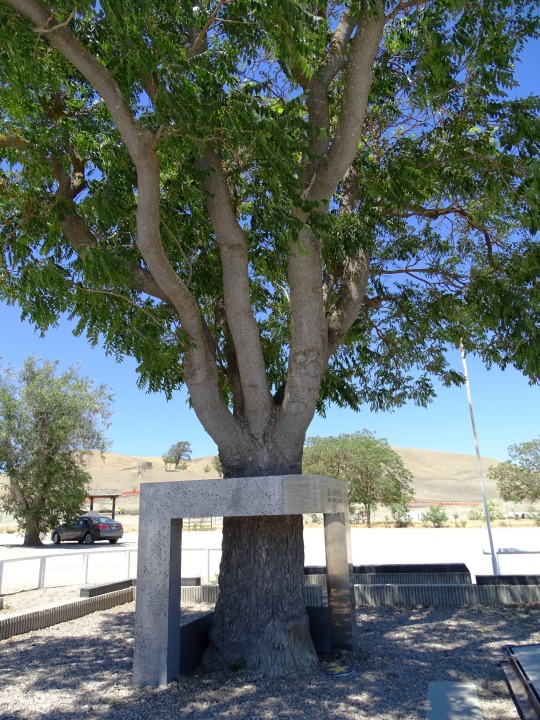



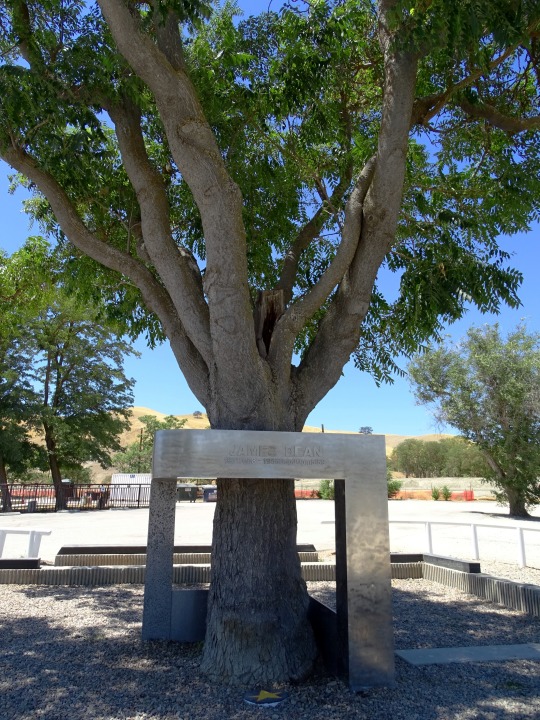

Cholame, CA
James Byron Dean (February 8, 1931 – September 30, 1955) was an American actor with a career that lasted five years. He is regarded as a cultural icon of teenage disillusionment and social estrangement, as expressed in the title of his most celebrated film Rebel Without a Cause (1955), in which he starred as troubled teenager Jim Stark. The other two roles that defined his stardom were loner Cal Trask in East of Eden (1955) and surly ranch hand Jett Rink in Giant (1956).
Dean died in a car crash in 1955 and became the first actor to receive a posthumous Academy Award nomination for Best Actor for his role in East of Eden. He received a second nomination for his role in Giant the following year, making him the only actor to have had two posthumous acting nominations. In 1999, the American Film Institute ranked him the 18th best male movie star of Golden Age Hollywood in AFI's 100 Years...100 Stars list.
On September 30, as the group [James Dean, Bill Hickman, Sanford Roth and Rolf Wütherich] was driving westbound on U.S. Route 466 (currently SR 46) near Cholame, California, at approximately 5:45 p.m., a 1950 Ford Tudor, driven by 23-year-old California Polytechnic State University student Donald Turnupseed, was travelling east. Turnupseed made a left turn onto Highway 41 headed north, toward Fresno ahead of the oncoming Porsche. Dean, unable to stop in time, slammed into the passenger side of the Ford, resulting in Dean's car bouncing across the pavement onto the side of the highway. Dean's passenger, Wütherich, was thrown from the Porsche, while Dean was trapped in the car and sustained numerous fatal injuries, including a broken neck. Turnupseed exited his damaged vehicle with minor injuries.
An inquest placed fault for the accident entirely with Dean. There is a James Dean monument, financed by a Japanese businessman, in front of the former Cholame post office (which closed in 1994) and a restaurant (until its closure in 2022), one half-mile from the site of the accident.
Source: Wikipedia
#Ailanthus altissima#tree of heaven#Chinese sumac#paradise tree#Cholame#San Luis Obispo County#James Dean#near the car crash site#James Dean Memorial#James Dean monument#travel#original photography#vacation#tourist attraction#landmark#landscape#flora#nature#summer 2022#California#West Coast#actor#death#killed#USA
2 notes
·
View notes
Text

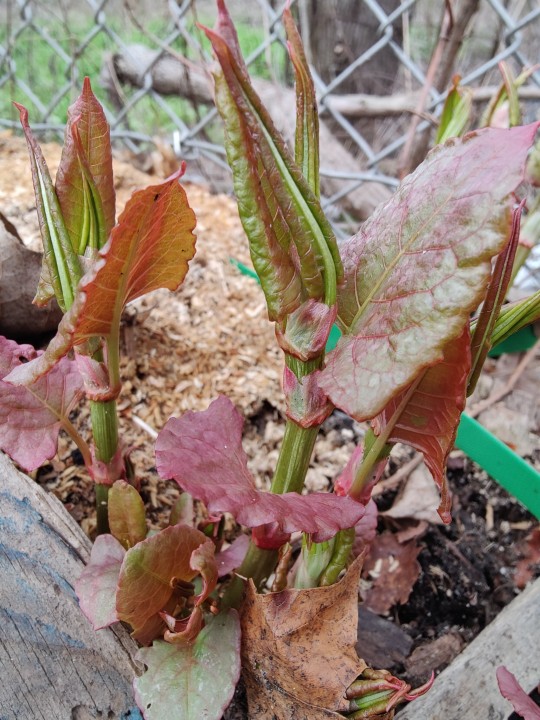
japanese knotweed (reynoutria japonica) in post industrial new england
#terribly invasive species! as dominates this area.#along with black walnut (native) because black walnut likes to kill most things it grows around (allelopathy)#tree of heaven (ailanthus altissima) (another invasive plant from Asia which hosts the spotted lanternfly an agricultural pest)#also has allelopathic properties and also dominates.#v
1 note
·
View note
Text

Ailanthus altissima ~ Trees of Heaven, V/24
649 notes
·
View notes
Note
Either no one has asked yet or there are no results, but could you do the "Mark Zuckerberg" game grumps rant?
String identified:
a t g a: a a c t g, , t t t ?
: a.. A: tcg g Ct c tc ac t ca cg t t
a: a a at ' tag at gt .
: a.. A: G a cat ac t cg a a t gt cg t g a g t at c t ca't cg t t a t t c t atc t t c g a
a: A, ' cag .
: a.. A: tcg -a -a t t t c t t t tcg t t t t a a cg t t g ' t
a: , a. '…' t t tag at t G ta.
"at, , . ' ta' c at." A: a ' t ta at t ac a a t a a t tt t t a t a at t ac c t atc t a a a a a ag c g a c -a ca t g Tt t tac c t g t ac 't g ca't t t c t ac A ca t a t g t ac t c t ac
: .. A: A CG.
Closest match: Ailanthus altissima genome assembly, chromosome: 12
Common name: Tree of Heaven

#tumblr genetics#asks#requests#genetics#sent to me#geoffthewitch#game grumps#arin hanson#dan avidan#mark zuckerberg#plants#trees#tree of heaven#high fantasy ass name
760 notes
·
View notes
Text
An App Does Not a Master Naturalist Make
Originally posted on my website at https://rebeccalexa.com/app-not-master-naturalist/ - I had written this as an op-ed and sent it to WaPo, but they had no interest, so you get to read it here instead!
I have mixed feelings about Michael Coren’s April 25 Washington Post article, “These 4 free apps can help you identify every flower, plant and tree around you.” His ebullience at exploring some of the diverse ecological community around him made me grin, because I know exactly what it feels like. There’s nothing like that sense of wonder and belonging when you go outside and are surrounded by neighbors of many species, instead of a monotonous wall of green, and that is a big part of what led me to become a Master Naturalist.
When I moved from the Midwest to the Pacific Northwest in 2006, I felt lost because I didn’t recognize many of the animals or plants in my new home. So I set about systematically learning every species that crossed my path. Later, I began teaching community-level classes on nature identification to help other people learn skills and tools for exploring their local flora, fauna, and fungi.
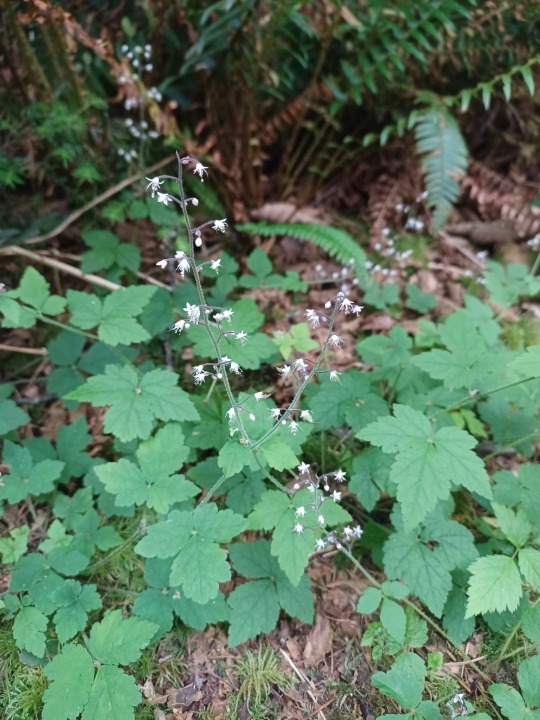
Threeleaf foamflower (Tiarella trifoliata)
Let me be clear: I love apps. I use Merlin routinely to identify unknown bird songs, and iNaturalist is my absolute favorite ID app, period. But these tools are not 100% flawless.
For one thing, they’re only as good as the data you provide them. iNaturalist’s algorithms, for example, rely on a combination of photos (visual data), date and time (seasonal data), and GPS coordinates (location data) to make initial identification suggestions. These algorithms sift through the 135-million-plus observations uploaded to date, finding observations that have similar visual, seasonal, and location data to yours.
There have been many times over the years where iNaturalist isn’t so sure. Take this photo of a rather nondescript clump of grass. Without seed heads to provide extra clues, the algorithms offer an unrelated assortment of species, with only one grass. I’ve gotten that “We’re not confident enough to make a recommendation” message countless times over my years of using the app, often suggesting species that are clearly not what I’m looking at in real life.

Because iNaturalist usually offers up multiple options, you have to decide which one is the best fit. Sometimes it’s the first species listed, but sometimes it’s not. This becomes trickier if all the species that are suggested look alike. Tree-of-Heaven (Ailanthus altissima), smooth sumac (Rhus glabra) and eastern black walnut (Juglans nigra) all have pinnately compound, lanceolate leaves, and young plants of these three species can appear quite similar. If all you know how to do is point and click your phone’s camera, you aren’t going to be able to confidently choose which of the three plants is the right one.

Coren correctly points out that both iNaturalist and Pl@ntNet do offer more information on suggested species—if people are willing to take the time to look. Too many assume ID apps will give an easy, instant answer. In watching my students use the app in person almost everyone just picks the first species in the list. It’s not until I demonstrate how to access the additional content for each species offered that anyone thinks to question the algorithms’ suggestions.
While iNaturalist is one of the tools I incorporate into my classes, I emphasize that apps in general are not to be used alone, but in conjunction with field guides, websites, and other resources. Nature identification, even on a casual level, requires critical thinking and observation skills if you want to make sure you’re correct. Coren’s assertion that you only need a few apps demonstrates a misunderstanding of a skill that takes time and practice to develop properly—and accurately.
Speaking of oversimplification, apps are not a Master Naturalist in your pocket, and that statement —while meant as a compliment–does a disservice to the thousands of Master Naturalists across the country. While the training curricula vary from state to state, they are generally based in learning how organisms interact within habitats and ecosystems, often drawing on a synthesis of biology, geology, hydrology, climatology, and other natural sciences. A Master Naturalist could tell you not only what species you’re looking at, but how it fits into this ecosystem, how its adaptations are different from a related species in another ecoregion, and so forth.
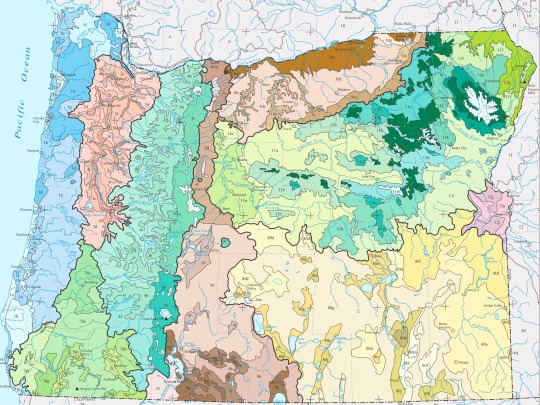
Map showing Level III and IV ecoregions of Oregon, the basis of my training as an Oregon Master Naturalist.
In spite of my criticisms, I do think that Coren was absolutely onto something when he described the effects of using the apps. Seeing the landscape around you turn from a green background to a vibrant community of living beings makes going outside a more exciting, personal experience. I and my fellow nature nerds share an intense curiosity about the world around us. And that passion, more than any app or other tool, is fundamental to becoming a citizen naturalist, Master or otherwise.
Did you enjoy this post? Consider taking one of my online foraging and natural history classes or hiring me for a guided nature tour, checking out my other articles, or picking up a paperback or ebook I’ve written! You can even buy me a coffee here!
#iNaturalist#plant apps#Seek#Merlin#nature#wildlife#plant identification#apps#botany#biology#science#scicomm#science communication#Google Lens#naturalist#Master Naturalist#conservation#environment
629 notes
·
View notes
Text
My common milkweed (Asclepias syriaca) is definitely the most popular flower in the habitat ring right now. It seems like every day I’m finding a new insect to identify.

If you thought this was some kind of beetle you’re not alone — I thought the same. However, it’s actually a moth!
Atteva aurea, or the ailanthus webworm moth, was originally native from southern Florida to Costa Rica along with its host plants, native paradise trees. However, it is also able to use the invasive tree of heaven (Ailanthus altissima) as a host plant, spreading north throughout much of the United States.
#insects#moths#Atteva aurea#Asclepias syriaca#native plants#invasive plants#gardening#the habitat ring#don’t be a petaq grow native plants
11 notes
·
View notes
Text


Ailanti in città (Ailanthus altissima (Mill.) Swingle, Simaroubaceae)
12 notes
·
View notes
Text


7 notes
·
View notes
Text
How it started:

How it’s going:


You might think this is an allegory about mental illness or trauma or whatever but it’s actually about me helping a guy remove a tree of heaven (Ailanthus altissima, also known as stinky sumac) root from the bed in front of his store
#he offered me a beer which I declined but greatly appreciated it. no one else has ever compensated me for this shit (so far)#dispatches from the park
7 notes
·
View notes
Text
AILANTHUS WEBWORMMMM MOTH (Atteva aurea)
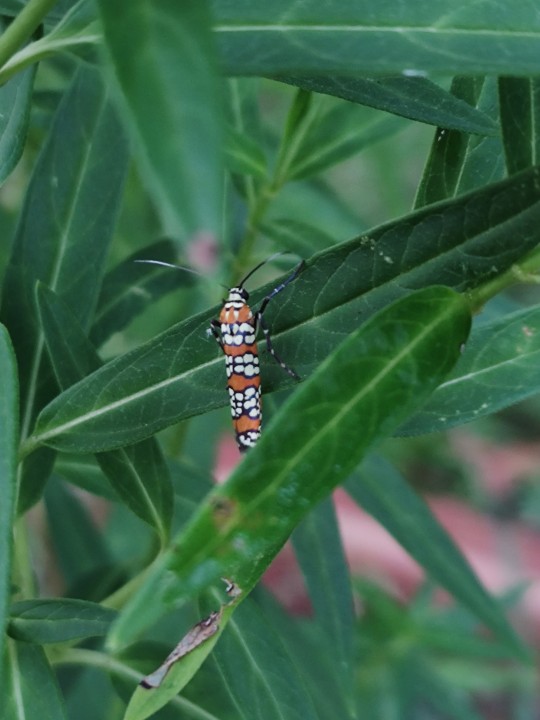
(my photo of an Ailanthus Webworm Moth, Atteva aurea)
This super cool little dude here was found chilling on my milkweed! They like my sedum a lot too which is where I normally find them, these guys are a native species to the eastern US and can be found pretty much all the way through Canada to Mexico, I've never seen them before this season and at first I thought they were a beetle because I never saw their proboscis or them fly, They get their name Ailanthus from the tree of heaven, Ailanthus altissima, tree of heaven is an invasive species unlike the webworm moth which is native, but when the tree of heaven was introduced and began to spread, the range for the Webworm moth did to!
This is incredibly fascinating to me as I rarely think of invasive species and native ones working together. I always have thought of invasive species as being unusable by a native species. Even when a bee drinks nectar from a Chinese privet or a bird nests in a Bradford pear, I always thought that was the limit of the use, something that just takes the place of something more beneficial, but while that still is the case for some species of plant and animal, in the case of the Ailanthus Webworm moth, it has truly used the tree of heaven to its advantage. I've never heard of or thought of a native species using an invasive one in this way, to further its own gain and spread across the US. I find it truly fascinating!
I'm not saying this is a good or bad thing of course; I despise invasive species especially ones as fast acting and destructive as the tree of heaven. I just think it's interesting to see how the tree of heaven has also facilitated the spread of a species that was already a US native.
Also I found this at the end of one website explaining why they weren't a serious pest and I thought it totally sounded like the webworm moth wrote it:

Links to where I learned this stuff:
If anyone else has seen these guys and wants to add any pictures or info, please do! Let's share all the knowledge we can!
#ailanthus webworm moth#gardenblr#nature#plantblr#gardening#forest#plants#bugs#garden#bugblr#insectblr#moth#mothblr
3 notes
·
View notes
Text
One thing that I often find lacking in online resources about plants is: when a plant is classified as invasive (which is always implicitly meant as “invasive in the US” since apparently that’s the only country /s), why is there no mention of why it’s so destructive outside of its native range?
Like, for example, I live in an area where Ailanthus altissima (tree of heaven) is invasive. I have read all about the mechanisms this tree uses to spread, the fact that it thrives and spreads even faster when cut, and the fact that it releases a chemical in the soil to prevent rival trees from growing.
But my question is, how does this tree coexist with other plants in its native ecosystem? How is its spread limited? What makes it native to that area, and invasive in other areas? Idk maybe it’s just me but I feel like it could be useful information but what do I know
2 notes
·
View notes
Text
if you live in north america and you have low blood pressure, one thing I recommend doing is researching Ailanthus altissima, also known as "Tree of Heaven," and learning to identify it. Soon your blood pressure will spike dramatically every time you're on a highway that goes next to any kind of woods. No need to thank me
#if you don't live in north america you can research another overwhelmingly common invasive plant. have fun.#in fact even if you do live in north america you can research more than one#look up kudzu if you're in the south. look up multiflora rose look up garlic mustard.
2 notes
·
View notes
Text
How to Identify Spotted Lanternflies
Click here to learn more about the How to Identify article series.
Name: Spotted lanternfly (Lycorma deliculata)
Range and typical habitat(s): Native range includes China and Japan; is invasive in North America and South Korea
Distinguishing physical characteristics (size, colors, overall shapes, detail shapes) and behaviors: The spotted lanternfly is a distinctive looking insect at any stage of development. The nymphs/instars have round, black bodies that taper to a small head with two large, round, yellowish eyes, one on either side. Younger instars have white spots, while the fourth and final instar additionally features bright red patches on its body. They do not have wings.
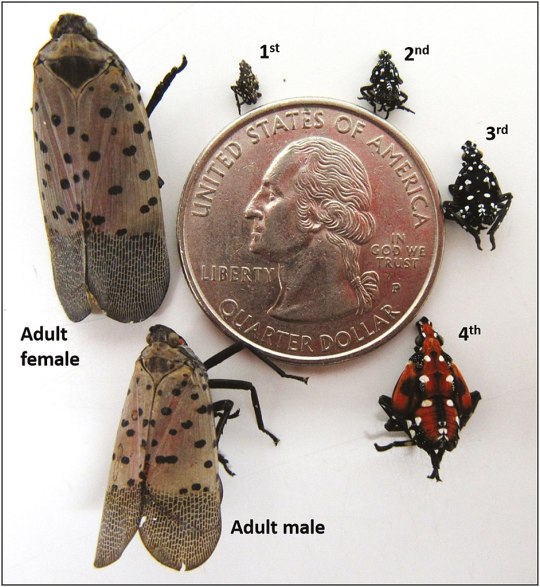
The adult spotted lanternfly is about an inch long, and is tan to light grayish-brown with a dark head and legs, and a dark triangle on the shoulders. The forewings also feature dark spots, and a dark web-like pattern at the wingtips, which are rounded in shape. The hindwings are often cover when the insect is at rest, but when spread they display bright red patches with black spots, and the distal ends are black with a white horizontal bar across each. The abdomen is thick and has yellow stripes, and the tip of the abdomen is red. The head is comparatively small, and again has two yellowish round eyes. In spite of having wings, they do not properly fly. Instead, they use these wings to help them leap from one plant to another.
The nymphs usually hatch in April or May. By July, the first adults appear, and prepare to mate and lay eggs. One female can lay up to fifty eggs that are protected in a waxy casing; they look a bit like a clump of clay or dirt stuck to a tree, wall, or other surface. They will overwinter in that spot, and in fact the colder the temperatures the more eggs hatch the following spring. The adults, meanwhile, usually die off by the end of the year; a lanternfly that has reached one year in age is geriatric indeed.

Spotted lanternflies are herbivorous; the nymphs prefer the tree of heaven (Ailanthus altissima), but will also opportunistically feed on other plants, ranging from trees to grapevines to soybeans. The nymphs and adults both suck sap from their host tree using specialized mouthparts, and in sufficient numbers can be deadly to the plant. All told, spotted lanternflies have been observed feeding on the better part of two hundred plant species.
Other organisms it could be confused with and how to tell the difference: There are two other species in the genus Lycorma that look quite similar to L. deliculata; both are found solely in Asia. L. imperialis, found in China, India, and Bangladesh, looks almost identical to L. deliculata, except the base color of the forewings in adults tends to be darker and greener in tone than the grayish-brown seen in L. deliculata. The coloration on L. imperialis’ abdomen may also vary, with orange or red patches being common.

L. imperialis. Photo by Tanja Popp, CCA-SA-4.0-Intl
L. meliae is more obviously a different species than L. deliculata. Its forewings are a deep red with the same black spots and webbing pattern. There is also a variant that is solid black except for white spots on the forewings, with a deep red to orange abdomen with black stripes or splotches. L. meliae is only found in Taiwan.

L. meliae. Photo by Lin Sun-Fong, CC BY-SA 2.0
Anything else worth mentioning? Spotted lanternflies are considered to be a highly invasive insect in North America; they arrived by accident in 2014 and have been spreading throughout the northeast since then. They do significant damage to crops such as soybeans (Glycine max) and apples (Malus domestica), and also attack native plants like black walnut (Juglans nigra) and Virginia creeper (Parthenocissus quinquefolia). The nymphs parasitize the tree in such large numbers that they can cause severe damage in a short period of time. Additionally, leaking sap from the tree as well as the nymphs’ waste (honeydew) not only drip onto the plants’ leaves and hinder photosynthesis, but they also promote fungal growth that further injures the plant.
In its native range, the spotted lanternfly’s usual host is the tree of heaven. Like the lanternfly, this tree is also highly invasive in North America, and has been a key factor facilitating the spread of spotted lanternflies. Many efforts to control or prevent the spread of lanterflies involve removing tree of heaven, which can be quite difficult to eliminate completely. However, evidence is growing that lanternfly nymphs that feed on plants other than tree of heaven are not as healthy, and this may be a crucial control in keeping these insects in check.
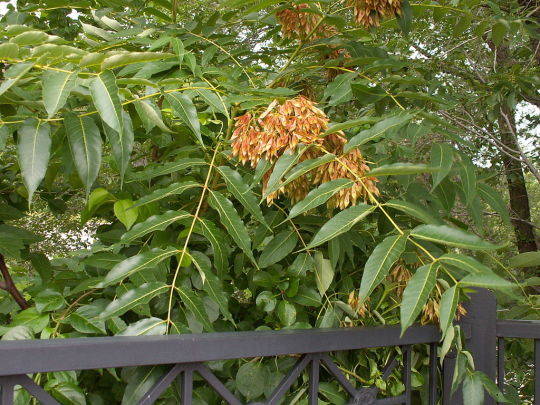
People in North America who find the nymphs or adults, and especially egg casings, are encouraged to smash them on sight. Other regions around the world that regularly trade agricultural products with China or North American countries are also on the lookout for any sign of spotted lanternflies being introduced.
Further Reading:
USDA APHIS: Spotted Lanternfly
PennState Extension: Spotted Lanternfly
Invasive Bug Prompts Quarantine In Pennsylvania Townships
Spotted Lanternfly in New Jersey: What you need to know
Spotted Lanternfly (Hemiptera: Fulgoridae) Can Complete Development and Reproduce Without Access to the Preferred Host, Ailanthus altissima
Did you enjoy this post? Consider taking one of my online foraging and natural history classes or hiring me for a guided nature tour, checking out my other articles, or picking up a paperback or ebook I’ve written! You can even buy me a coffee here!
#spotted lanternflies#spotted lanternfly#insects#invertebrates#invasive species#nature#wildlife#animals#invasive plants#environment#conservation#science#sci comm#science communication#PSA#nature identification
72 notes
·
View notes
Text
only 20 minutes to sleep, but you dream of some epiphany
The busy streets of the center of the town they have made their haven in is no strange sight, not anymore. Merchants cry out their wares from all sides, behind colorful stalls, shaded from the harsh sun at the height of day. A cornucopia of smells engulfs Ed, from cooks and bakers handing out their goods to a crowd so dense he can't see past it. When he looks up, the sight of the chouchun, ailanthus altissima, the tree of heaven, sparing them from the sun's wrath takes his breath away, still. Everything is wonderfully contrasted from the sights of his old life. This one is---peaceful. Calm.
Stede stares with sparkling eyes at the fabric merchant showing a simple robe to a lady, yet the waistline was painted with waves, in precise strokes of white and indigo. It was what Stede loved the most, when they first arrived. The clothes, no longer tight layers upon layers, but long, warm fabrics that could be made into a work of art. If Ed had his riches about him, he would have bought Stede a robe that wouldn't shame the emperor.
Spotting that a place has cleared in front of their favorite dumplings stand, Ed grabs Stede's hand and pushes him towards it. The fabric merchant won't disappear.
They return home with their stomaches full and soothed, hand in hand. Their cabin is just at the outskirts of town, on a small hill that's sprouting with grass and an occasional flower this time of year. It happens to overlook the ocean; the reason was to ease their longing to the sea. The real reason was, the one they won't admit out loud, was safety.
Stede steps ahead of him, their joined arms stretching between them like an unbreakable bond. He let his hair grow a tad longer, and now it frames his face like a golden halo with the help of the sun as he smiles back at Ed. He always does, whenever they return home. He tugs on his hand, and they run the remaining slope up the hill laughing.
Ed lands against the mattress, Stede draped over him, the kiss made sweet when Stede's tongue brushes against his, sipping from his mouth. Ed buries his hand in the back of Stede's head, fingers sinking into his curls as Stede leaves him mouth and instead peppers kisses down the colum on his throat. He opens Ed's shirt button by button with every kiss, until he can caress the sides of his body, and lower his head to press heated kisses to his chest. Underneath him, Ed heaves, beholding Stede through the low of his eyelashes, rising to meet each fervent kiss. He cradles Stede's face before he is able to press another, and draws him towards his face. Their lips---
Ed jumps awake, the brightness of the dream, the light of their home, flashing before his eyes before dissipating into the darkness of the cabin, as if he stared at the sun for too long. The usual sight of the cabin greets him, empty, nothing but the bottles he drained or smashed against the wooden wall. Tears pool in his eyes, unbidden, at the lack of warmth, the lack of golden light, the lack of Stede, no longer by his side.
Ed blinks, powerless, tired, and the tears wash over his face in an even stream. He shudders on the small bad, foreign to him, taken not by right, and dares to wrap himself further into the fuchsia colored robe. The cold seeps into his bones, making every patch of skin prickle, and Ed lowers his head into his knees, pressed into his chest, and sobs at the loss of the life they could'vd had together.
#i was plauged by this image and it refused to let go#our flag means death#stede bonnet#edward teach#blackstede#blackbonnet#gentlebeard
6 notes
·
View notes
Text

#EspacioAtemporal
🎤 “LA VOZ DE LA NUEZ SILVESTRE” 🎨🖼🖌️
💥 Proceso creativo para esta instalación y los elementos iconográficos que la componen. Exposición sobre el viaje que trae la semilla, la raíz, un brote, una rama y la hoja de la nuez silvestre o Ailanthus altissima, con sus cinco partes esenciales como si de los cinco sentidos humanos se tratara y que nos hacen receptores del mundo, que nos aproximan a la realidad vegetal.🌱🌎🐿

👥 Ponentes: Ivana Papić (Croacia), Alfredo Villar (curador e investigador del arte amazónico) y Nuria Cano (curadora de la exposición).

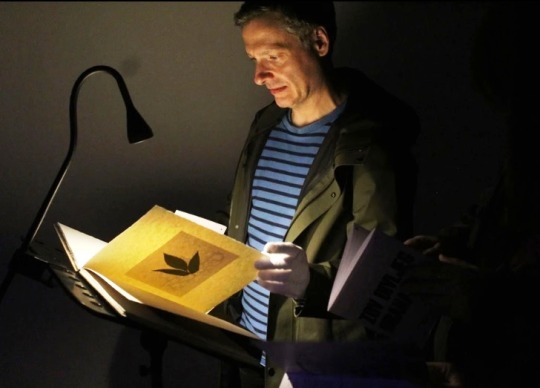
👩 Invitada: Ana Cecilia Carrasco (artista plástica): Proyecto: “Cushma”.- diseños elaborados con mujeres de la Comunidad San Miguel Centro Marankiari, del Valle del Perené en Chanchamayo. De esta manera veremos conexiones entre las artistas que ven a la naturaleza como principio.
© Producción: Etnografski Muzej Split.
▶️ Vídeo Promocional: https://youtu.be/TQykaCELgEE

📌 CONVERSATORIO:
📆 Miércoles 13 de Marzo
🕖 7:00pm.
🐈 El Gato Tulipán (Bajada de Baños 350 – Barranco)
🚶♀️🚶♂️ Ingreso libre
0 notes